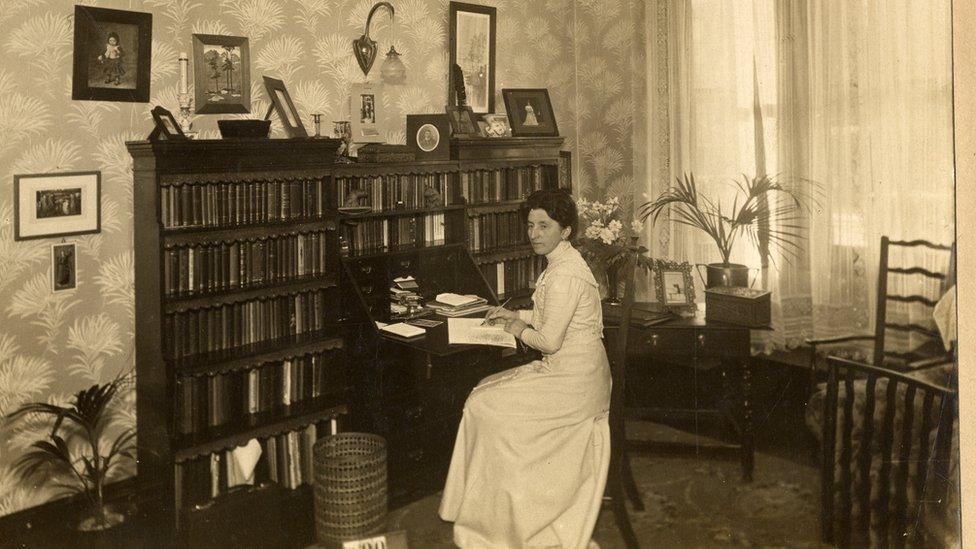Bedford blue plaque to be unveiled on BBC 'Somewhere in England' base
- Published
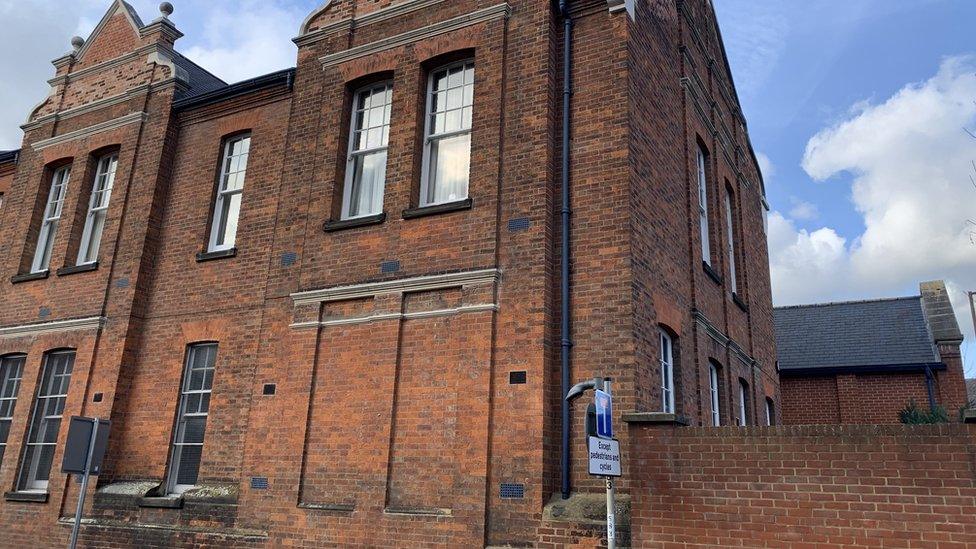
A plaque is being unveiled on the side of the Bunyan Meeting building on Castle Lane
A blue plaque to commemorate the BBC's move to a town during World War Two is being unveiled at the site of one of its former studios.
The Bunyan Meeting, external building in Castle Lane, Bedford, was one of seven BBC sites during the conflict.
About 8,000 of the corporation's music and religious programmes were broadcast from the town between 1941 and 1945.
It became known as "Somewhere in England" in the broadcasts, with various other locations also used.
During World War Two, many BBC programmes and services of moved out of London.
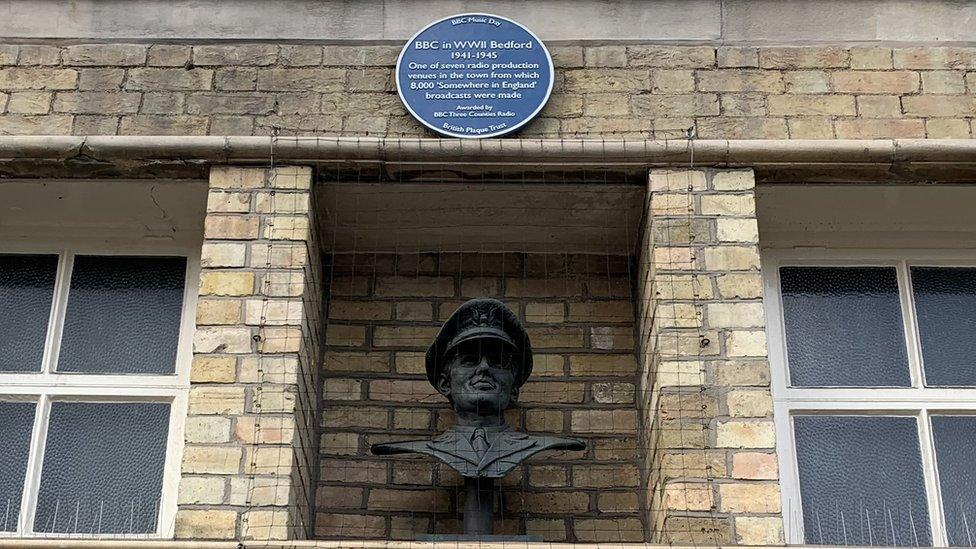
A blue plaque to mark the BBC's presence during World War Two is on the Bedford Corn Exchange above a statue to band leader Glenn Miller
The BBC's Music and Religious Broadcasting Departments' first home was in Bristol but in 1941, following several bombing raids, they were forced to move.
Four hundred staff were relocated to Bedford as it was deemed less likely to be targeted by German bombers.
Seven studios were set up in the town including studio number three at the Bunyan Meeting church with a smaller studio, known as 3A, used for talks and recitals.
The hall was used by the BBC Symphony Orchestra, the Theatre Orchestra, and the BBC Singers for rehearsals and recordings. Double sound-proofed doors were installed, which are still in place today.
The main control room for all their operations was installed in what is now the Harrowden Room.
The new plaque which reads - WW2 BBC Radio Music and Religious Broadcasting Main Control Room for Seven Studios in Bedford 1941-45 - is one of several in the town that marks the contribution to Britain's religious and musical life the BBC played during the war.
This includes the Bedford Corn Exchange, where the jazz band leader Glen Miller was based, Bedford School and St Paul's Church.

Find BBC News: East of England on Facebook, external, Instagram, external and Twitter, external. If you have a story suggestion email eastofenglandnews@bbc.co.uk, external
Related topics
- Published11 February 2022
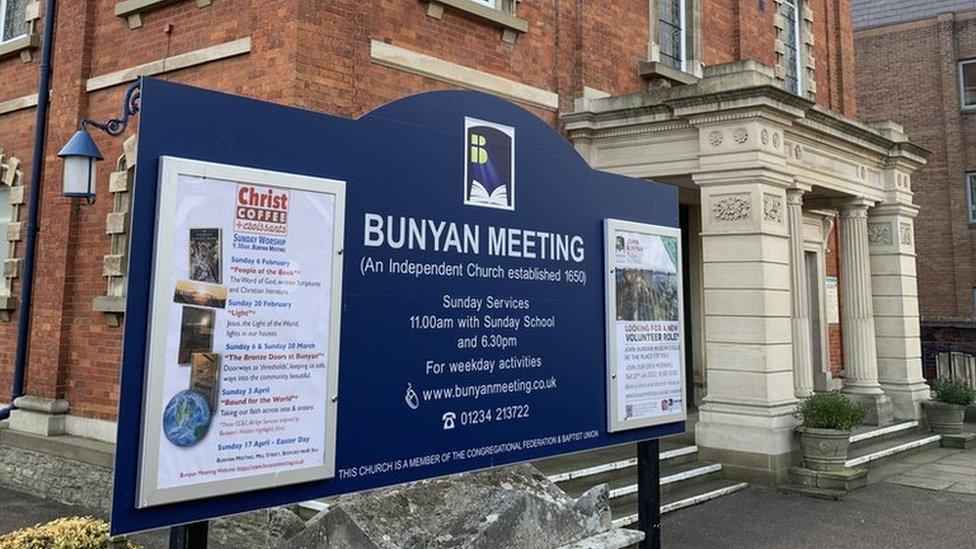
- Published14 January 2019
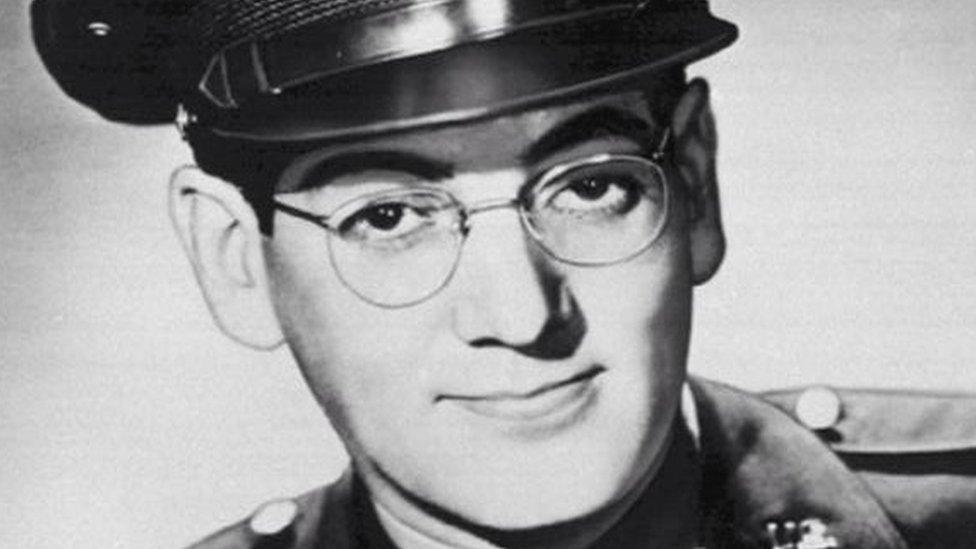
- Published14 December 2018
